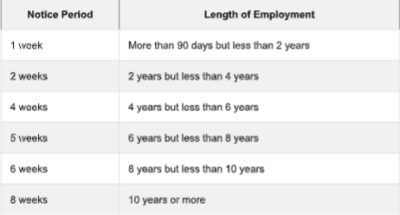The following is information only, not legal advice.
We are here to help you navigate through these uncertain times. We have been getting a lot of questions from our clients on how to manage staff and operations during this difficult time. We wish we could say we have all the answers regarding the different government programs coming down and exactly how you should respond to your workforce, but we don’t yet. However, our goal is to give you as much information and support as we can. It’s a tough time for all of us.
We certainly have been doing our best to stay up-to-date on the developments coming down from Alberta Health Services, the Alberta Government, and the Federal Government and thought we should share some of what we know with you. Of course, nothing beats having a one-on-one conversation so if you would rather, please give us a call!
Some immediate options (explained in more detail below) as you face a slowdown in business are:
● Federal Work-Sharing Program
● Temporary Wage Subsidies
● Temporary Layoffs
● Terminations
Federal Work-Sharing Program
The purpose of the Work-Sharing Program is to help both you and your employees avoid layoffs when you experience a temporary decrease in business outside of your control—like right now!
A decrease in business would be defined as: “not a cyclical/reoccurring slow down but approximately a 10% decrease in business activity within the last 6 months”.
How would this work? You would temporarily reduce your employee’s hours and then the employee would apply for EI to supplement their income. During this time of COVID-19, the work sharing agreement can be for a maximum of 76 weeks and EI can be applied for immediately. The reduction in hours must be equal to the number of anticipated temporary layoffs.
The employees involved must agree to the Work-Sharing Program — they would need to sign a letter. In the letter, you both would agree to a specific reduction in work hours and then Service Canada will pay 55% of the reduced amount.
Confused? Here is an example:
- Rebecca works full-time earning $1,153.85/week (annual salary of $60,000)
- Due to COVID-19, Rebecca’s employer is experiencing a downturn in business
- All employees in the work unit agree to the Work-Sharing Program where they reduce their work
hours to 50% - If Rebecca doesn’t agree, her employer will likely have to lay her off, and she will receive $573
per week (55% of her weekly income is $634.62 but the maximum she can receive on EI is $573
per week) - If Rebecca agrees to a 50% reduction in her hours, she will receive the following income: Employer will pay: $576.92/week (50% of regular weekly income) and EI will pay: $317.31/week (55% of the reduced income: $576.92*0.55)
- On the Work-Sharing program, Rebecca will earn $894.23 per week.2
As you can see from the above example, it is much more advantageous for Rebecca to agree to the Work-Sharing Program. If Rebecca were to be laid off and apply for EI, she would receive a maximum of $573/week.
Other factors to consider with the Work-Sharing Program:
- Employees in the program must be eligible to receive EI.
- Employees in the program must be core employees, not temporary or seasonal.
- If additional hours become available, they must be shared equally amongst the employees in the
program. - If an employee declines the work share program, their hours must be reduced by the same
amount as the others. - The employer must submit recovery plans to Service Canada.
- The employer must maintain all existing employee benefits.
- Application must be submitted 30 days before the requested start date.
- If not approved, the decision cannot be appealed; however, employers can reapply with no wait
time in between applications. - The reduction of the employees’s regular work week schedule should be between a minimum of
10% (one half day) and a maximum of 60% (three days).
This information is meant to provide you a basic overview of the program. Please read the full version if you are interested in applying.
More options will be available to businesses in the next week or so. Learn more here.
Temporary Wage Subsidies
Eligible employers can receive immediate financial aid through the temporary wage subsidy program announced by the Federal Government as a response to COVID-19.
- The subsidy will provide eligible small employers a temporary wage subsidy for a period of three
months. - The subsidy is equal to 10% of remuneration paid during that period, up to a maximum subsidy of
$1,375 per employee and $25,000 per employer. - Employers will be able to benefit immediately from this support by reducing their remittances of
income tax withheld on their employees’ remuneration. - Eligible businesses include corporations eligible for the small business deduction, as well as non-
profit organizations and charities.
Check out the FAQ’s for this program: https://www.canada.ca/en/revenue-agency/campaigns/covid-19-update/frequently-asked-questions-wage-subsidy-small-businesses.html
Terminations and Temporary Layoffs (Alberta)
Temporary Layoff
Are you slowing down and temporarily closing operations for the time being but are hoping to bring back your staff at a later date? Temporary layoffs are one option. A temporary layoff is where you lay off your employee for a period of time (60 days) and want to bring them back.
As an employer, you are committed to continue employment for the employee after the temporary layoff has been completed. If you are not able to bring your employee back and if no payment (this includes wages, pension and/or benefits) has been provided to the employee during this period, the temporary layoff concludes on the 61st day of leave. At this time either termination pay (see below) must be provided (with potential severance pay) or the employee must be brought back into the same or comparable role that they left. Failure to do so may be considered constructive dismissal.
Should a permanent termination be required or determined by the employer, all earned wages (accrued vacation, any outstanding bonuses or commissions, etc.) must be paid out at that point, in addition to termination notice pay as required by Alberta Employment Standards. The length of the temporary layoff is not factored into the total length of employment when calculating notice period/termination pay or severance pay, which allows employers to “pause” employment with an individual.
It is worth noting that during this time of our pandemic, if you, as an employer, continue paying any wages, pension and/or benefits during the layoff period, the 60-day period does not apply and the layoff can continue, as long as the agreement is mutually agreed to between employer and employee.
Employees on a temporary layoff are eligible for EI. Typically, layoff notice must be provided to
employees:
- 1 week for employees who have been employed under 2 years
- 2 weeks for anyone over two years
NOTE: Given the current situation due to COVID-19 and cases of other business actions as it relates to this, we believe your risk is very low if you do not provide the notice, in particular if you are providing benefits to employees. There is a clause in Alberta Employment Standards that gives some wiggle room to give notice when unforeseen circumstances are experienced. However, it is advisable to do your best to provide as much notice as possible. Again – call us and we can walk you through this!
Termination
Unfortunately, some businesses may not be able to keep their staff on for the short- or long-term. We’re here to walk you through this process. The Alberta Employment Standards Code sets out mandatory notice periods (or termination payment in lieu of notice).

Additional common law severance may apply. When terminating an employee, the common law severance payment is IN ADDITION to the Employment Standards mandatory notice-period payments listed above. These payments are provided in exchange for a release signature by the employee stating that they will not take any legal action against the employer. As you can imagine, these can get quite expensive.
Our Recommendations (not to be taken as legal advice):
If needed, provide temporary layoffs with benefits for all employees being released. Provide notice period at your discretion but current circumstances may be in favour of no notice periods; however, that is not a guarantee. In light of our current circumstances this is already becoming a new norm for employers and we don’t believe it will pose a risk to not provide it.
Providing benefits will not only buy you time but will also aid in the difficulty that employees are currently facing. It is a kind and human thing to do —something all employers need to try and balance with their financial interests.
Should it come down to you needing to permanently sever relationships, choose more junior employees to release (if you are able) — it will cost the organization less to do so later.
Other Options
Redeploy people into other roles. Remember to be careful with this as it can be seen as “constructive dismissal” if their scope of work changes drastically.
Offer part-time/reduced hours/job sharing/across-the-board reduction in wages. Some employees would be grateful for this given the current situation. Offering these kinds of options may give some employees peace of mind around things so they can focus on social distancing and alleviate pressures of child care due to closures, etc.
Offer work-from-home arrangements. This can be in combination with part-time hours or can remain full-time. Work from home arrangements require clear policies and guidelines about how to do that (we can help should you go down that route).
Steps to Reduce your Workforce
- Review positions by department; consider organization needs based on position and the
performance of the employee in the position. - Review your employee list and assign employees into critical positions outlined in step 1.
- For those staying in critical positions, determine possibilities for alternate work arrangements
(‘Other Options’ above). - Provide a list of those to be laid off and/or permanently terminated (issue ROEs). We always
suggest creating a PDF of the ROE to print or email to the employee instead of sending them to
Service Canada only. This helps to alleviate some of the stress and unknown for them. This is
just a preference but you can choose not to provide a printed copy. - For employees being laid off, you must provide them a letter. We can provide a letter that has all
the legally required verbiage in addition to FAQs to assist with the transition. We can also
provide a write-up of messaging for managers to give to employees. - All other accommodated employees (redeployed, alternate work arrangements) will be provided a
letter and policies of new work arrangement as required. - If you don’t currently have, we suggest putting a policy and procedures in place for working from
home during COVID-19. - We suggest also helping employees navigate how to work from home. It is a new way of
working. - Ultimately, it’s important to find that balance between financial burden and social responsibility in your organization.
This is scary, and an uncertain time for everyone. Employees will look to you to be calm and compassionate and we will help you navigate where to take action as required. We know this is a lot of information to take in and unfortunately it is not a one-size-fits-all approach.
If you would like to talk, give us a call and we can work with you on what you need right now to help you get through this. We are all in this together.
